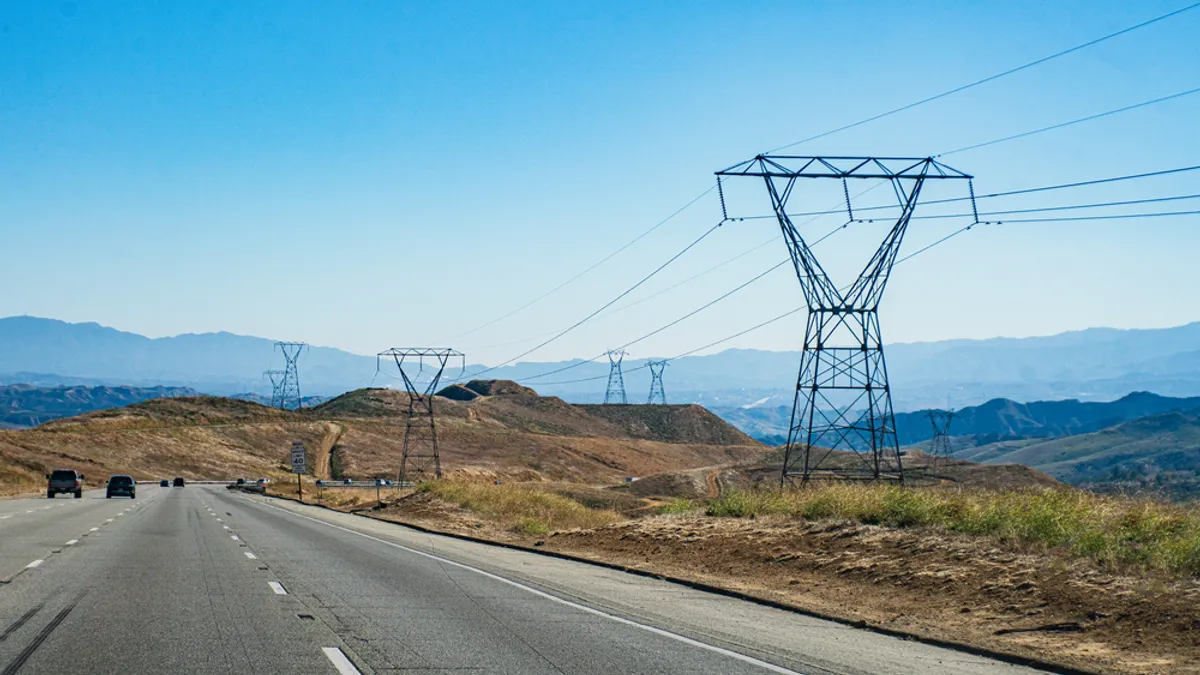Dive Brief:
- The California Independent System Operator’s footprint could require up to 5 GW of long-duration energy storage, if it retains existing gas resources, according to a new report sponsored by the California Energy Commission, or CEC. On the other hand, it could require up to 37 GW by 2045, if it is aiming to decarbonize more deeply and potentially retire in-state gas resources.
- While most lithium-ion batteries provide storage durations in the four-hour range, long-duration energy storage technologies, which last 12 hours to multiple days or more, could provide the grid with energy during times of stress, balance energy demand across days and seasons, and reduce renewable curtailments, the report found.
- Policymakers in California are eyeing the potential role that long-duration energy storage can play in the state’s clean energy transition. In December, the CEC issued a $30 million grant to Form Energy to build a 5 MW/500 MWh iron-air battery storage project at a Pacific Gas & Electric substation in Mendocino County. The project, which will be capable of discharging energy for 100 hours, will be the largest long-duration energy storage facility in the state and is slated to come online by the end of 2025.
Dive Insight:
The CEC’s latest report takes a closer look at the role that long-duration energy storage can play in the CAISO system. It found that with a “business-as-usual” scenario under California’s clean energy policies, which would allow for 12 million metric tons of annual emissions from the electricity sector and retain gas resources, it would be cost-effective to add up to 5 GW of long-duration energy storage to the system by 2045. But to decarbonize the grid even further — such as by retiring in-state gas resources — it could make sense to add up to 37 GW of long-duration resources.
California’s Senate Bill 100, passed in 2018, set a goal for the state to derive all retail electricity sales from renewable and zero-carbon resources by 2045.
The report’s numbers align with Form Energy’s analysis, Mateo Jaramillo, the company’s co-founder and CEO, said in an email. Installing 37 GW of long-duration storage by 2045 implies deploying around 2 GW per year starting a couple years from now, he noted, and California has deployed more than the equivalent amount of lithium-ion storage in the last three years.
The report noted that long-duration storage could allow for the retirement of existing gas capacity from CAISO’s transmission-control system, “while maintaining reliable grid operations over simulations across 35 historic weather years.”
“Portfolios that retire in-state gas by using LDES were found to achieve cost parity, and in some cases cost savings, relative to those that retain existing in-state gas,” it noted.
Long-duration storage is an excellent alternative to natural gas and provides particularly good resilience benefits, since they can provide continuous power for longer time periods, Julia Souder, CEO of the LDES Council, said in an email. But scaling up long-duration resource deployments can face challenges, including interconnection queues and appropriate accreditation in the state’s resource adequacy program, she added. Today, storage resources with durations of eight, 12 or even 100 hours are treated identically to four-hour duration storage under resource adequacy frameworks, she said.
“This is obviously problematic because they will play a different role in system reliability, particularly under scenarios with little natural gas-fired generation on the system in the future,” Souder added.
The report also included pointers for policymakers, including considering new revenue streams, electric tariff structures and incremental environmental policies that could improve the economics of long-duration storage microgrids. One recommendation that Jaramillo emphasized was directing future planning and procurement to optimize local system resource needs.
“A majority of the most expensive and most problematic power plants that exist in California, and around the country, are in areas where local reliability risks are highest and disadvantaged communities are most impacted by air pollution,” he said, adding that a portfolio of short and long-duration storage can tackle the twin problems of reliability risks and air pollution in disadvantaged communities, cost effectively.















